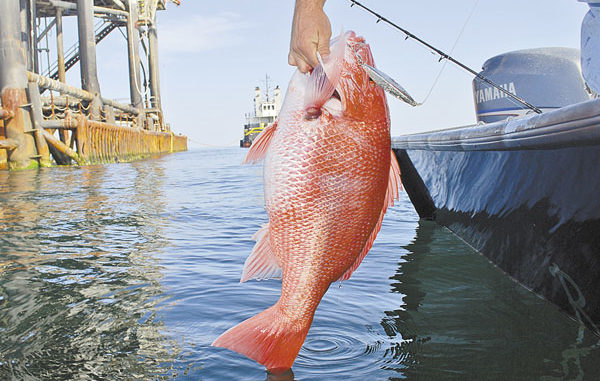
Do you enjoy working for your meals? Neither do trophy speckled trout. Use that to your advantage this month to put real wall-hangers in the boat.
It is hard to believe that the recreational season for Gulf of Mexico red snapper has shrunk to less than two months this year. That is especially hard for recreational fishermen to take when red snapper are so common that they have become easy to catch on topwater or shallow lures and baits.
Once the glory of the offshore recreational fishery, anglers are now tossing them back in disgust for 10 months a year because they interfere with the pursuit of other species. But for many fishermen, red snapper still snare their interest.
They attract attention from research biologists too, and may have become the most researched fish in the Gulf. But in spite of all the time and money spent on research, there is still much to be settled about the biology of the species.
One thing is how much they move from place to place. Because snapper are considered reef fish, many anglers assume they cling to one spot most of their lives, without much travel. Some research indicates that red snapper do indeed move around, not to the degree that they can be considered wanderers, but they do move.
In 2003, scientists at LSU conducted red snapper-tracking research by putting electronic pingers in the body cavities of 125 2- to 4-year-old fish. Ninety of the fish were released in the same location that they were captured from, and 35 were relocated before they were released.
The fish were captured at oil and gas platforms in a 9-square-mile area 30 miles south of Belle Pass in South Timbalier. Electronic receivers were attached to seven platforms and an artificial reef in the area. The receivers picked up, recorded and stored signals from each individual tagged fish that swam into the area of the receiver. Data from the receivers was recovered monthly.
The results showed that most tagged fish stayed near the site of release for weeks or months, and showed little or no movement between platforms — at least at first. However, the longer the fish were free, the higher the likelihood of movement.
Because of this movement, there was thought to be a high probability that snapper used more than one platform in their lives. Over the six months of the study, the majority of the tagged red snapper did leave the area.
Red snapper that were relocated before being released showed a slightly stronger tendency to move than did fish that were released at their capture site for up to 70 days, after which they were less likely to move than were non-relocated fish.
A total of 36 recaptures of tagged fish were made. Only two came from the commercial fishery, one from a restaurant and one from a fish house.
Research done off of the Alabama coast showed similar results. The study was done in a 1,243-square mile artificial reef area that contained an estimated 20,000 large and small reefs. Most of them were small, privately created structures that anyone could legally fish over — if they could find them.
Biologists made 28 trips over a 3-year period to nine artificial reefs in the area located in water depths of 68 to 101 feet. They caught and tagged 2,932 red snapper. Of these, 2,053 were tagged and immediately released where they were caught. The other 879 fish were tagged and moved to other areas before release. Eighty-five percent of the fish were under 16 inches long and less than 3 years old.
A total of 550 tagged fish were caught again, including several that were caught twice and one that was caught three times.
The results of the study indicated that red snapper, at least in the sizes tagged in the study, move around quite a bit. Only about 26 percent of the tagged fish were in the same place one year later. The average tagged fish moved 18.6 miles, at an average speed of 244 feet per day.
During the study, two hurricanes, Opal and Georges, passed very near the study area. Tagged fish were found to move farther and faster during hurricanes than during normal weather periods. Although one red snapper moved from off of Alabama to offshore of Fourchon, almost all movement was to the east. The longest distance moved was almost 219 miles.
Fish that were caught in one area, tagged and then moved to another area before release showed no tendency to move back to the area they came from. Although most of the fish tagged were relatively small, the study showed no relationship between the size of the fish and the distance that they traveled.
Overall, the longer a fish was at liberty after tagging, the greater the distance the fish moved.
Jerald Horst is the author of four books on fish and seafood, including the acclaimed Trout Masters: How Louisiana’s Best Anglers Catch the Lunkers. His latest book, co-authored with his wife Glenda, is The Louisiana Seafood Bible: Crawfish.


